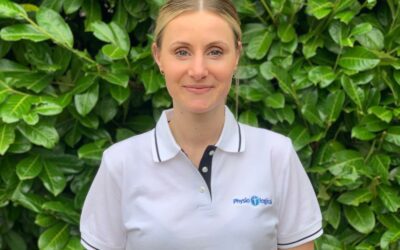How to treat a calf strain
We see a lot of people with calf strains in our Rowlands Castle clinics, but most recently as well as runners we have seen a lot of footballers.
Most footballers come to the clinic with a clear history of running/changing direction and they have such severe pain and tearing sensation that they report they turn to see who has shot them in the back of the leg as that is what it feels like.
The calf has two main large muscles: the gastrocnemius, the large muscle closest to the surface, and the soleus, the deeper muscle which sits behind the gastrocnemius. There is also a smaller muscle called plantaris.
A calf strain is a tear in the muscle at the back of your lower leg. Both of these muscles join onto your Achilles tendon which then attaches to the back of the heel. The most commonly strained calf muscle is gastrocnemius as it is more vulnerable because it crosses both the knee and ankle joints.
Here is a testimonial from one of our footballers who pulled his calf:
“I badly pulled my calf early December 2018 and desperately needed to be back playing football in 3 months. I was told by many this wouldn’t be possible. Weekly treatment by Natalie and her team got me back on schedule and I’m pleased to say I made it! I went from not being able to walk, to playing football in about 11 weeks. Great service and lots of tips along the way. Highly recommended” Mr. A
Our last blog about calf injuries highlighted what to do in the early stages after a calf strain, so today we will share with you rehab exercises to do as the muscle is healing so from 4 weeks onwards.
Exercises for a moderate calf strain (from 4 weeks):
Please be aware of your body and take advice from your doctor before exercising if you have any aches or pains, or send us an email (enquiries@physio-logical.net) for advice and guidance.
After 3-4 weeks start the more traditional stretches short of pain (once the calf injury has healed further).
Standing Gastrocnemius Stretch
 |
|
Standing Soleus Stretch
 |
|
Calf Raises
|
Single Leg Calf Raises
 |
|
Loaded Strengthening
Once the pain has settled it is time to improve the load capacity of the muscle and tendon by improving calf strength.
Normally you should be able to manage 10-15 single leg calf raises with no increase in your pain before you progress to this level.
Heavy Slow Resistance:
 |
|
Single Leg Balance:
Check out and subscribe to our FREE YouTube channel where you can also find demonstrations of these exercises plus others too.
Calf strains/tightness respond really well to treatment with a physio, sports therapist or sports massage therapist, so if you are suffering from an ongoing calf problem or keep straining your calf muscles playing football then please get in contact with us via enquiries@physio-logical.net, 07835 712306 or book online as we can help you to get rid of that ongoing calf pain/tightness. Once you have sprained your calf muscle there is a high chance you will do it again if you do not fully rehabilitate and strengthen your calf muscle.






